











| Blue Hawaii Blue is the only way to describe being in Paradise without Cherie—okay, well, maybe aqua marine would do too. Yes, I missed her, but a week in Hawaii, in November, is still a week in Hawaii. Sip a kona coffee or mai tai, and enjoy the slideshow below. |
| O'ahu Snapshots
|
|
Squeezed in after work hours and on the weekend, the sights of O'ahu were beautiful, from the USS Arizona memorial in Pearl Harbor, to the sandy Waikiki beach, to the top of Diamond Head, the flowers and nut hulls, the sunsets and moonlit walks on the beach, and the underwater snorkeling beauty of Hanauma Bay. This is a tropical paradise...too bad millions of other people think so too. |
| A Day at Pearl Harbor | |
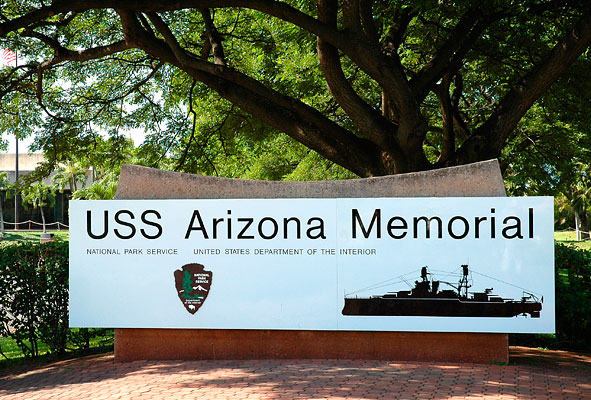
|
After spending a couple of days in meetings at Fort Shafter, my co-worker Jeff and I spent a late Friday afternoon at Pearl Harbor to relive the start of World War II.
|
| A photo from December 7, 1941 shows the USS Arizona in flames after taking a hit from a Japanese bomber. Photo from the Pearl Harbor National Park Service website http://www.nps.gov/archive/ usar/photos1/indexa.htm |
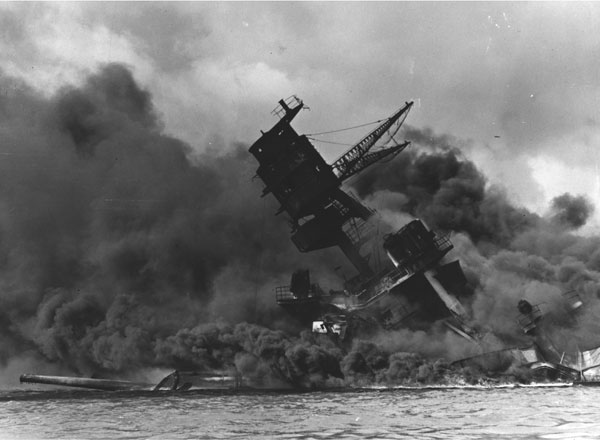 |
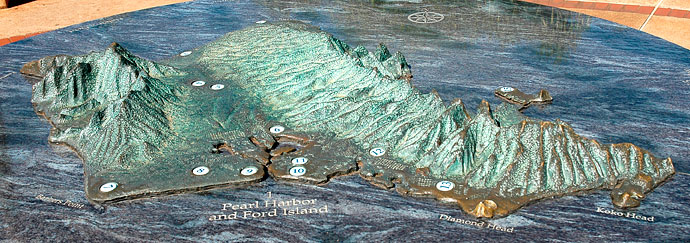 Flying in to Hawaii, the island is conveniently labeled so tourists can quickly orient themselves. Okay, so that's not really the case, but it would have been handy. However, a relief map at Pearl Harbor puts the island of O'ahu in perspective. The key points we hit were Diamond Head at the southeast corner of the island, (13) the city of Honolulu and Waikiki Beach, (12) Fort Shafter, (10) Honolulu Airport, and the island just northwest of (11), Ford Island, in the middle of Pearl Harbor, where the Navy's battleships were berthed in 1941. Further up the middle of the island, where a couple of other numbers lay, is the Army's Schofield Barracks. |
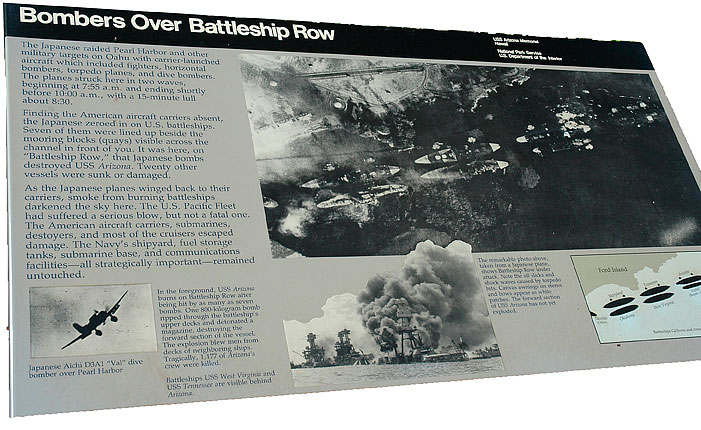 | |
| Today, the site is peaceful, with many Japanese tourists coming to look at the memorial. In the photo at right, the USS Arizona memorial is seen between the palm trees, just off Ford Island. To the left of the Arizona is the USS Missouri, the battleship on which the Japanese surrendered at the end of the war. | 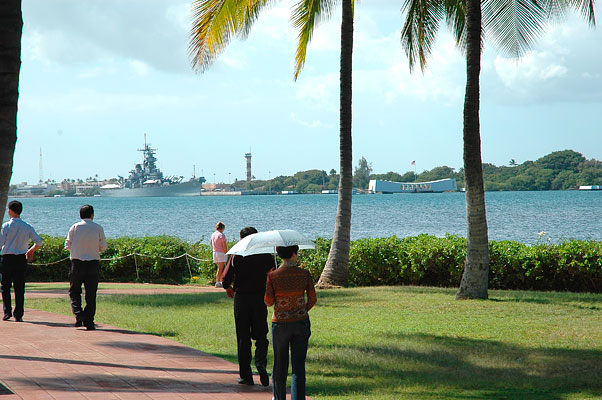 |
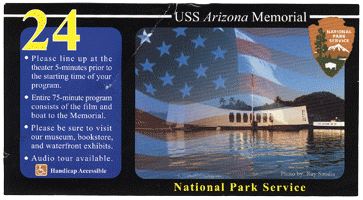 |
A free ticket gets you into a theater showing a film explaining the run up to the war and that fatal day in Hawaii. And then the park service and Navy board you on a boat to take you out to the memorial structure that stands over the remains of the sunken ship. |
| The remains of the battleship and its crewmen are still beneath the water. The memorial, right, has windows along the side that offer views of the front and aft remnants, and has a memorial wall in the back with the names of the sailors and marines who went down with their ship. | 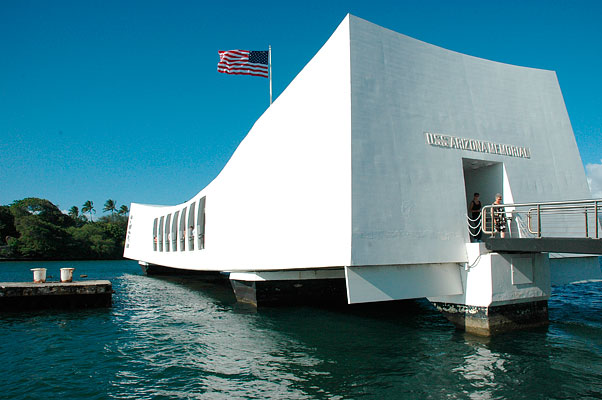 |
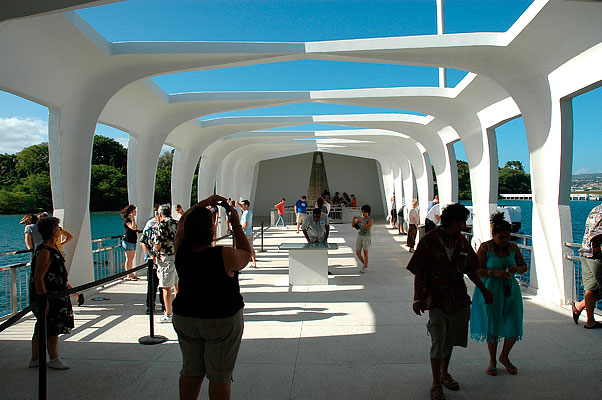 The inside of the memorial, with the memorial wall through the opening at the far end |
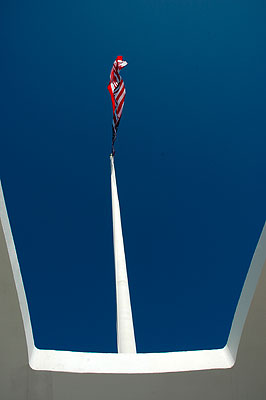 |
The US flag, left, flies above the memorial, honoring those who served it so well.
The remains of the ship are pretty murky below the water. |
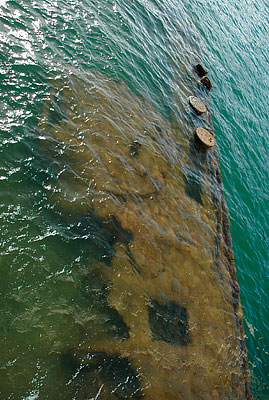 |
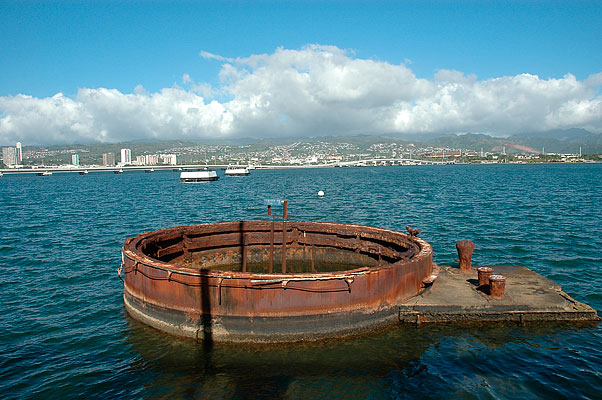 One of the ship's massive gun turrets juts above the water... it is the only ship structure still clearly visibile. |
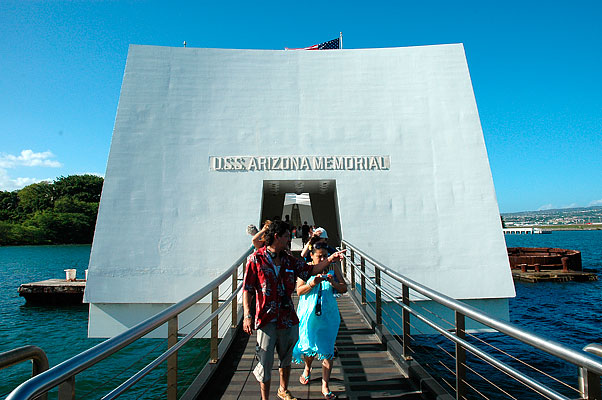 |
After paying respects to those who lost their lives, we reboard the Navy boat and headed back to the national park... |
| ...with the memorial in the boat's wake | 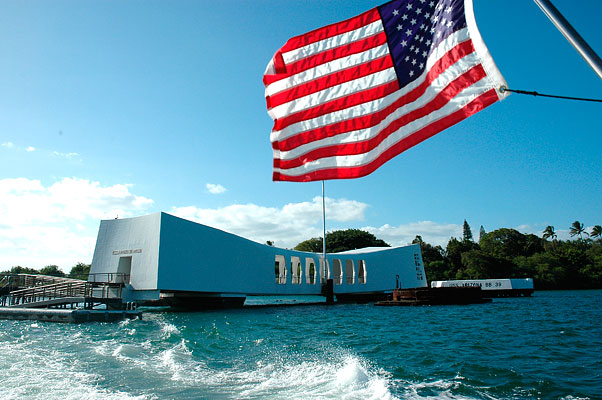 |
USS Bowfin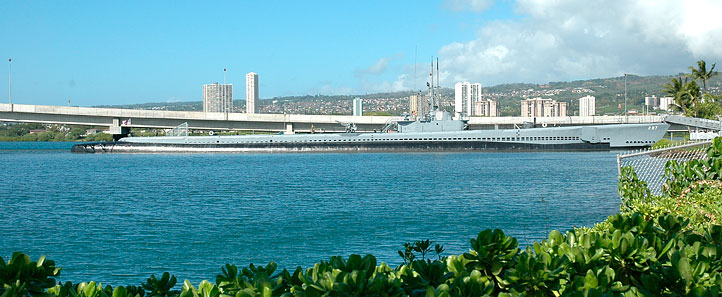 The USS Arizona was designed to operate above water, and ended up below.
The USS Arizona was designed to operate above water, and ended up below.The USS Bowfin was designed to operate under water, and ended up above. The historic irony was not lost on us. The USS Bowfin, a WW II submarine commissioned in 1942 and the length of a football field, was converted to a museum. Jeff and I went down under to see what life was like aboard a vintage submarine. |
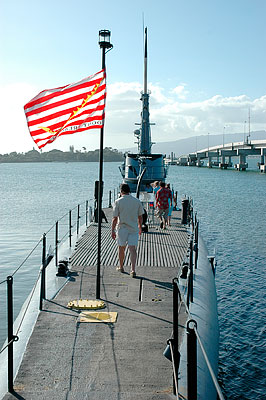 | Jeff, left, the "bow"legged sailor in white, strides atop the deck of the USS "Bow"fin. Coincidence? We think not.
The ship is credited with sinking 43 Japanese ships and one French merchant ship. |
| Like notches on a gunslinger's belt, the USS Bowfin has flags painted on its side for the ships it sank. The white flags with solid red circles (the national flag of Japan) represent the merchant ships it sank, while the white flags with red rising suns (the Imperial Japanese Navy flag) represent the military ships it sent to Neptune's bosom. The single French flag represents a Vichy French merchant ship which was sunk off Saigon in convoy with Japanese ships. | 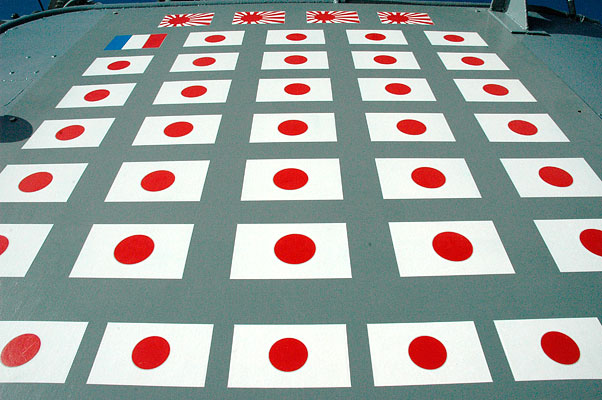 |
| Mechanical Marvels | |
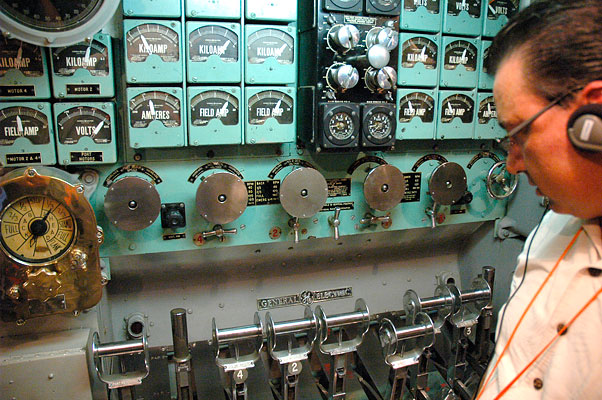 |
Jeff is clearly confused as he searches for the right switch to turn on the bathroom light. Probably doesn't help that the tour guide headphones he picked up were tuned to the Japanese language channel. |
| As if that weren't bad enough, further on we found a control panel that was completely out of control. No wonder the folks who designed and operated this machinery are called the Greatest Generation — even Bill Gates couldn't design an operating system this complicated. It kind of reminds me of all the levers and wheels that the Wizard used behind the curtain to make magic in the land of Oz. Come to think of it, same generation. |
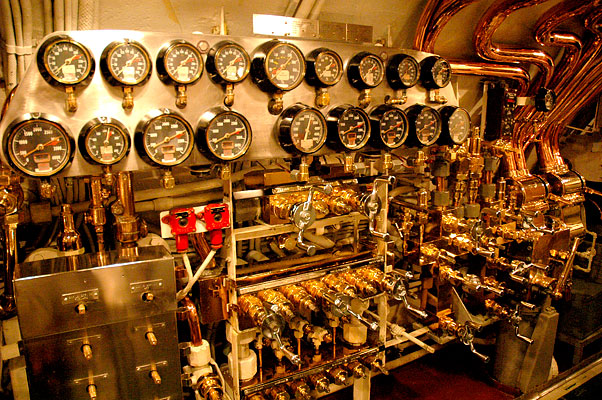 |
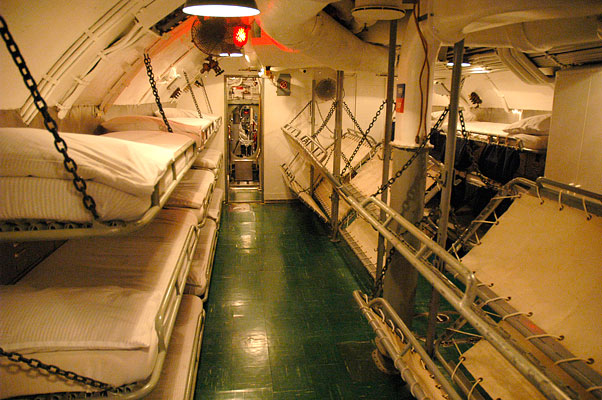 |
Tight quarters in submarines demand inventive use of space. Hallways were lined with sleeping bunks, and litters were slung from the ceiling for extension and usage at "night." |
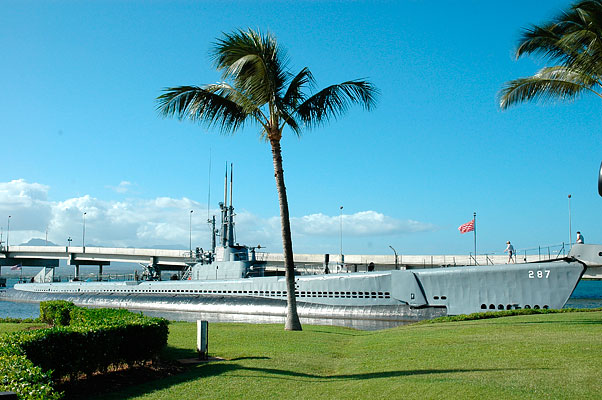 | |
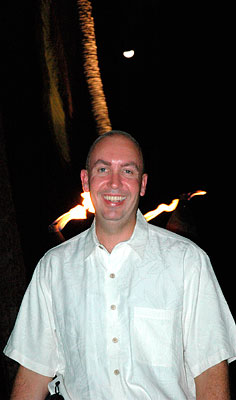 |
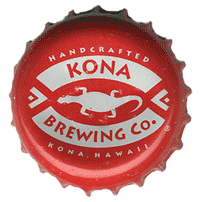 Cheers! Our friend Sloane, who we met when we lived in San Diego a few years ago, is stationed in Hawaii and was kind enough to spend Friday night showing us the sights of Waikiki. With tiki lights behind him, he's flamin' hot. Sloane took us to a smokin' seafood restaurant for dinner, and showed us the swingin' night spots in Waikiki, including a statue honoring Duke Kahanamoku, the native Hawaiian Olympic swimming champion and guy credited with introducing the sport of surfing to the world in the mid-1900's. Surfing fans continue to honor his memory with lais—something any guy can appreciate. | 
|
|
Hawaiian Hilton Village
| |
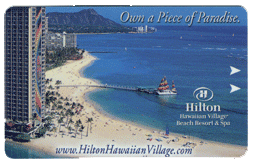 |
We stayed at the incredible Hilton Hotel in Waikiki, which faces the beach, above, and which has a village of restaurants, bars, shops, zoo, chapel, parks, and concert venues. Next door is the US military's Hale Koa resort, where Jeff and I downed a few mai tais most evenings. |
| Roll Up ... Roll Up for the Mystery Tour | |
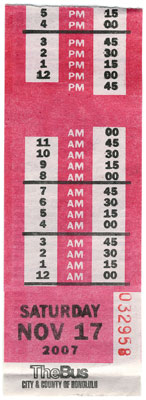 |
Business—and a night of partying—behind us, Saturday morning threw a pair of trunks and my camera in a backpack and trudged out to a city bus stop...for a magical tour of Diamond Head, Hanauma Bay, and Waikiki. First stop: the Diamond Head crater, where you walk or drive through a tunnel, below, to get into the crater.
|
| Out of the tunnel and into the crater, below, then across the crater to climb the steep side of the vocanic cone. The walk up to the top of Diamond Head is laborious, but also pretty fascinating, like the stretch through a wall of rock, right.
|
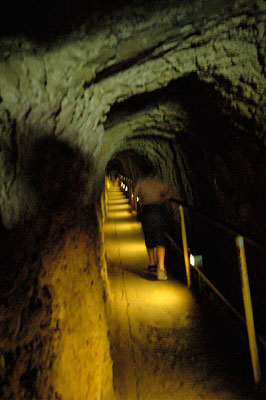 |
| And the views from the top are magnificent... ...in this case, looking along the coast toward Waikiki Beach and Honolulu  |
 Hanauma Bay Hanauma BayBack on the city bus, and on to Hanauma Bay on the very southeastern side of O'ahu, a nature preserve with some of the best snorkling on the island. Swimming among the reefs is like swimming in a gigantic tropical fish tank, with the added thrill of swimming along side sea turtles and coming face to face with fish that look pretty dang big, as in, hmmm, think I'll just leave that one alone. Unfortunately my camera doesn't have an underwater housing, but some to get an idea of the once-in-a-lifetime thrill of swimming with the fish, click on the Hanauma Bay Underwater Tour site, and enjoy your swim. |
  After turning in the mask and snorkel, drying off with my tee shirt, strapping sandels back on, and flagging down another bus, rode back to Waikiki, where I walked its length back to the hotel. Being late in the day, the sun turned the sky to liquid amber and slowly sank into the ocean.
After turning in the mask and snorkel, drying off with my tee shirt, strapping sandels back on, and flagging down another bus, rode back to Waikiki, where I walked its length back to the hotel. Being late in the day, the sun turned the sky to liquid amber and slowly sank into the ocean.So ended another day in paradise, drinking Longboard beer and eating seafood at a beachfront restaurant. |
| A l o h a ! | 
|